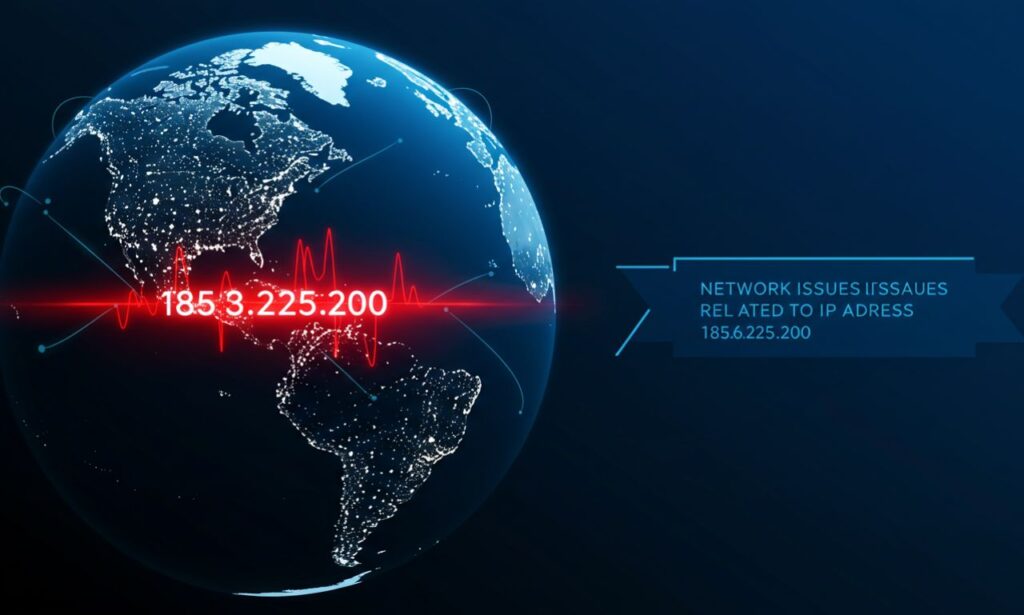In today’s digital age, every device connected to the internet has a unique identifier called an IP address. Understanding these addresses is crucial for navigating network issues effectively. One such intriguing example is the IP address 185.63.2253.200, which might seem unfamiliar at first glance but can reveal a lot about your network’s health and functionality.
Whether you’re dealing with connectivity problems or just curious about how all this technology works, grasping what 185.63.2253.200 represents could be the key to resolving various network-related challenges you may encounter in your online experience.
Let’s dive deeper into what makes IP addresses so important and explore common issues that arise when things go awry on the internet!
What is 185.63.2253.200?
185.63.2253.200 is an intriguing string of numbers, but it’s important to note that it isn’t a valid IP address. The structure suggests it’s attempting to follow the IPv4 format, which consists of four octets separated by periods.
Each octet can range from 0 to 255. However, the second octet here exceeds this limit with a value of 253. This means that while you might come across this number in discussions about networking issues or troubleshooting, it doesn’t correspond to any real device on the internet.
In essence, when dealing with network configurations and addressing schemes, accuracy matters immensely. Misinterpreting IP addresses like 185.63.2253.200 could lead to confusion and connectivity problems down the line as devices try to communicate within established protocols.
Understanding IP Addresses and Their Importance in Networking
IP addresses are the backbone of modern networking. They serve as unique identifiers for devices connected to a network, allowing them to communicate with one another.
Every device—be it your smartphone or computer—needs an IP address to send and receive data. This hierarchical structure ensures that information travels smoothly across networks.
Understanding how IP addresses work is crucial for both users and administrators. It enhances troubleshooting skills and improves network management efficiency.
Moreover, IP addresses come in two main types: IPv4 and IPv6. While IPv4 has been widely used, the growing number of devices necessitates a shift towards IPv6 due to its expanded addressing capabilities.
With such importance placed on these numerical labels, knowing how they function helps ensure seamless connectivity in our digitally-driven world.
The Role of DNS in Connecting IP Addresses to Domain Names
DNS, or Domain Name System, acts as the phonebook of the internet. It translates human-friendly domain names into IP addresses like 185.63.2253.200.
When you type a website’s name in your browser, DNS takes over. It queries multiple servers to find the correct IP address associated with that domain. This seamless process happens in seconds.
Without DNS, navigating the web would be cumbersome. You’d have to remember numerical addresses for every site you wanted to visit.
Moreover, DNS enhances user experience by allowing easy-to-remember names instead of complex numbers. This accessibility fosters better engagement and usability across platforms.
Security features are also embedded within modern DNS protocols to mitigate various online threats while enhancing performance through caching methods that speed up loading times for frequently visited sites.
Common Network Issues Related to IP Addresses
Common network issues related to IP addresses can disrupt connectivity and create frustrating user experiences. One frequent problem is an IP address conflict. This occurs when two devices on the same local network are assigned identical addresses, leading to communication failures.
Another issue people encounter is incorrect subnet masks. A misconfigured subnet can prevent devices from properly communicating within a local area network, causing delays or total loss of connection.
Additionally, some users may experience an inability to connect due to expired DHCP leases. If the Dynamic Host Configuration Protocol fails to renew the lease on an IP address, it can result in interrupted service.
Improper static IP configurations often lead to access problems as well. Assigning a static address outside the designated range can block a device from connecting altogether. Understanding these common pitfalls is crucial for maintaining reliable network performance.
Troubleshooting Steps for IP Address Problems
When facing IP address issues, the first step is to check your connection. Ensure that your device is properly connected to the network. A simple restart of your router can often resolve many common problems.
Next, verify the IP settings on your device. Make sure you are using either a static or dynamic IP as required by your network configuration. If you’re unsure, switching between these options might help identify the issue.
Using command prompt tools like “ping” and “ipconfig” can provide insight into connectivity status and assigned addresses. Checking for conflicts with other devices on the same network may also reveal hidden errors.
If all else fails, consider flushing your DNS cache using commands such as “ipconfig /flushdns.” This action clears any corrupted entries that could be affecting connectivity.
Reach out to your Internet Service Provider if problems persist; they may offer further assistance tailored to their service.
How to Prevent and Avoid IP Address Related Network Issues
To prevent IP address-related network issues, start with proper configuration. Ensure that devices are assigned static IP addresses if stability is crucial for your operations. This minimizes conflicts.
Regularly updating your router firmware can help as well. Manufacturers release updates to fix bugs and improve performance. Staying current protects your network from vulnerabilities.
Implementing DHCP (Dynamic Host Configuration Protocol) helps manage IP assignments efficiently. It automatically allocates addresses, reducing the chance of overlap or misconfiguration.
Monitoring network activity is essential too. Tools like Wireshark can track data packets and identify anomalies related to specific IPs quickly.
Educate users about best practices in handling their devices on the network—this knowledge plays a vital role in maintaining a healthy digital environment without unnecessary disruptions or conflicts.
The Impact of IPv6 on Future Network Addressing
IPv6 is a game-changer for network addressing. Unlike its predecessor, IPv4, it offers an almost limitless pool of addresses. As more devices connect to the internet daily, this expansion becomes crucial.
The transition to IPv6 means improved efficiency in routing and better security features built into the protocol. Organizations can enjoy seamless connectivity without worrying about running out of IP addresses.
Additionally, with mobile devices becoming ubiquitous, IPv6 supports the growing demand for unique identifiers. This support lays the groundwork for innovations like IoT (Internet of Things) applications.
As we embrace smart homes and connected cities, IPv6 will facilitate communication between countless devices effortlessly. The future of networking hinges on this evolution in addressing technology.
Conclusion
Navigating the complexities of network issues related to 185.63.2253.200 can be daunting, but understanding how IP addresses function is essential for effective troubleshooting and maintenance. As we’ve explored, IP addresses are critical components in networking that connect devices across the globe.
Recognizing common problems associated with specific IP addresses allows users to take proactive measures before they escalate into bigger issues. Utilizing DNS effectively can also bridge gaps between numerical identifiers and user-friendly domain names.
As technology evolves, especially with the advent of IPv6, it’s crucial to stay informed about developments in network addressing. By implementing best practices and preventive strategies, you can ensure a smoother online experience while mitigating potential disruptions linked to your IP address.
Staying engaged with ongoing advancements will only enhance your understanding and ability to manage future network challenges effectively.






